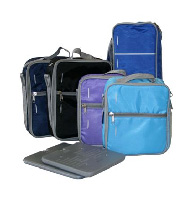Golden Circle Lunchbox Report lifts-the-lid on School Lunchboxes

Golden Circle Lunchbox Report lifts-the-lid on School Lunchboxes
An overwhelming nine in ten (87 percent) Australian parents do not know the correct serving amounts of fruit and vegetables their child should eat in a day, according to the Golden Circle Lunchbox Report released to coincide with students going back-to-school in 2011.In a bid to lift-the-lid on school lunchboxes around the country, the Golden Circle Lunchbox Report found parents were not only unclear about what their child should eat each day, but only 53 percent send their kids to school with fruit or vegetables in their lunchbox every day.
Aloysa Hourigan, Media Spokesperson for Nutrition Australia, sympathises with parents: "There is so much choice and differing opinions in terms of suitable lunchbox fare, I can understand why parents are feeling confused about what and how much to give their children.
"Nutrition Australia recommends parents go back to basics with fruit and veg. School aged kids should be eating up to 1-3 serves of fruit and 2-4 serves of vegetables each day depending on their age and level of physical activity."
The Dietary Guidelines for Children and Adolescents in Australia identify that one serve of fruit is equivalent to one medium apple or two small apricots or 125ml of 99-100% fruit juice. One serve of vegetables is equivalent to half a cup of cooked vegetables or one cup salad vegetables.
The Golden Circle Lunchbox Report found that conflicting information is not the only challenge for parents, with 68 percent of Australian parents admitting they face barriers in providing a balanced lunchbox. Almost four in five (77 percent) parents believe kids are much more likely to eat fruit and vegetables if they think it is cool, and 55 percent of parents say their kids won't eat food unless it is well presented.
Kathy Hodson, Corporate Nutritionist at Golden Circle, feels it's important that parents feel supported in overcoming any barriers they face: "We understand busy parents face a number of challenges when it comes to providing a balanced lunchbox for their kids, and although fruit juice does not replace fruit, it can be a convenient and fun way to help reach the recommended daily serves. For example, Golden Circle's LOL is a regular unsweetened 99% fruit juice, which has been carbonated to make it fizzy and fun."
The Golden Circle Lunchbox Report shows Aussie kids have fruit juice with their lunches two days a week on average, but more than half (56 percent) do not get fruit juice at all.
Aloysa Hourigan from Nutrition Australia says: "There's nothing like fresh fruit and veg, however 99-100% fruit juice can provide an occasional alternative - but only once a day. Fruit juice still provides valuable vitamins and minerals and can play a role in a healthy balanced lunchbox. Furthermore, consuming fruit juice as part of a meal, instead of a snack, helps protect healthy teeth and gums in growing kids."
Golden Circle and Nutrition Australia's top fruit and veg lunchbox tips for parents include:
Don't give up on fruit - try for at least one fruit item in the lunchbox such as fresh strawberries, 99-100% fruit juice, dried apricots or tinned pears in natural juice
Veggies are a must in a sandwich or on their own as part of a 'snack box' with low fat cheese cubes or hummus or tzatziki dip
Frozen fruit juice is a great way to keep the lunchbox cool in the summer months
Try some veggie or fruit muffins; see www.nutritionaustralia.org for healthy lunch and snack recipes.
Facts about Fruit Juice and Kids Nutrition:
The most recent survey of Australian kids' nutritional intake revealed that fruit juice:
Markedly increased the number of children meeting their fruit serves
Provided the same total energy (2%) on average in 2007 as 1995
Intake is 112ml on average - within the serve recommendations of the Government's Australian Guide to Healthy Eating
Is associated with dietary positives - less fat and saturated fat, more folate, potassium and vitamin C than those not consuming juice
Is most often consumed with meals and mid meals
Contributes a range of important nutrients to the diet
Does not compromise fibre or calcium intakes.
*The 2007 Australian National Children's Nutritional and Physical Activity Survey (prepared by the CSIRO and funded jointly by government and industry)
MORE



